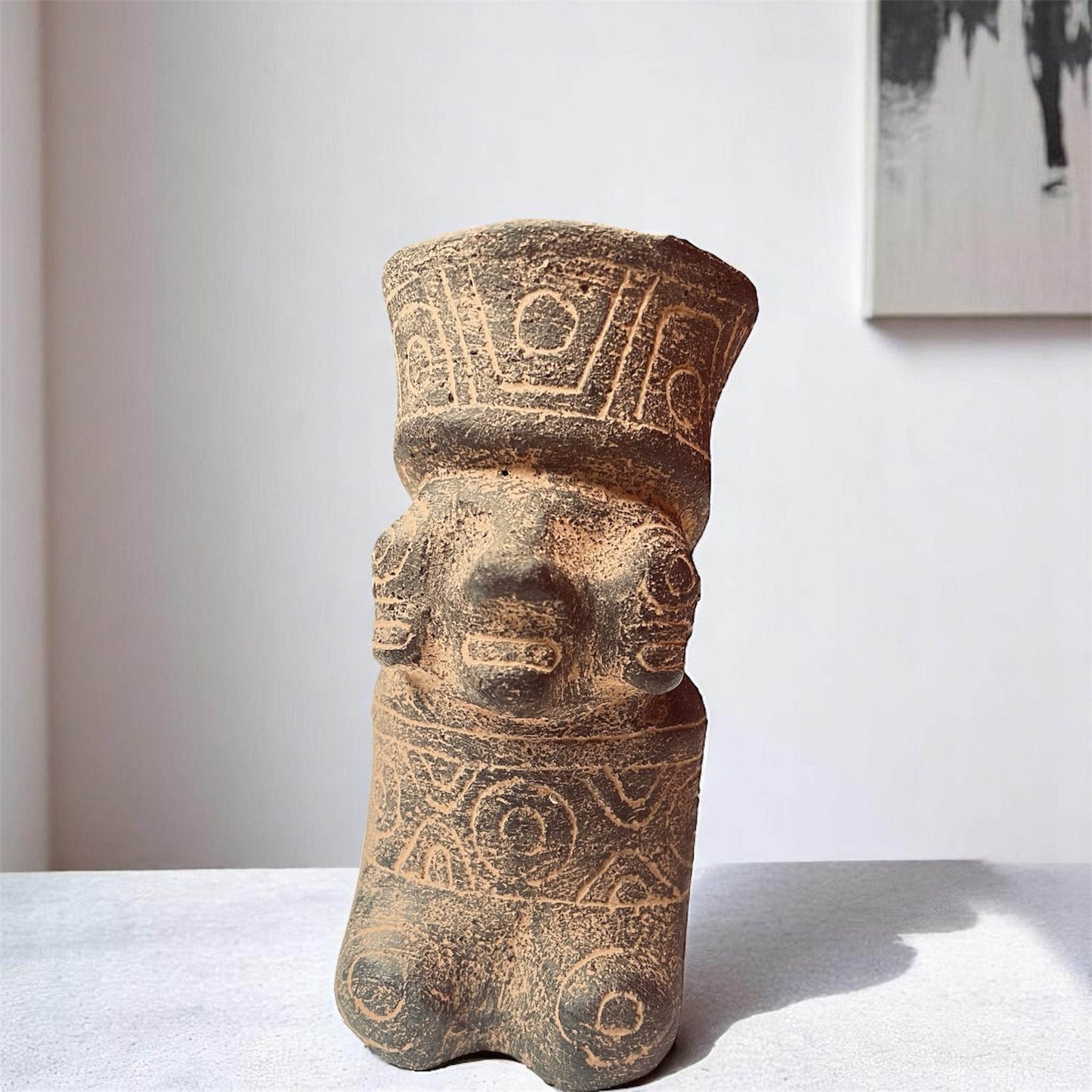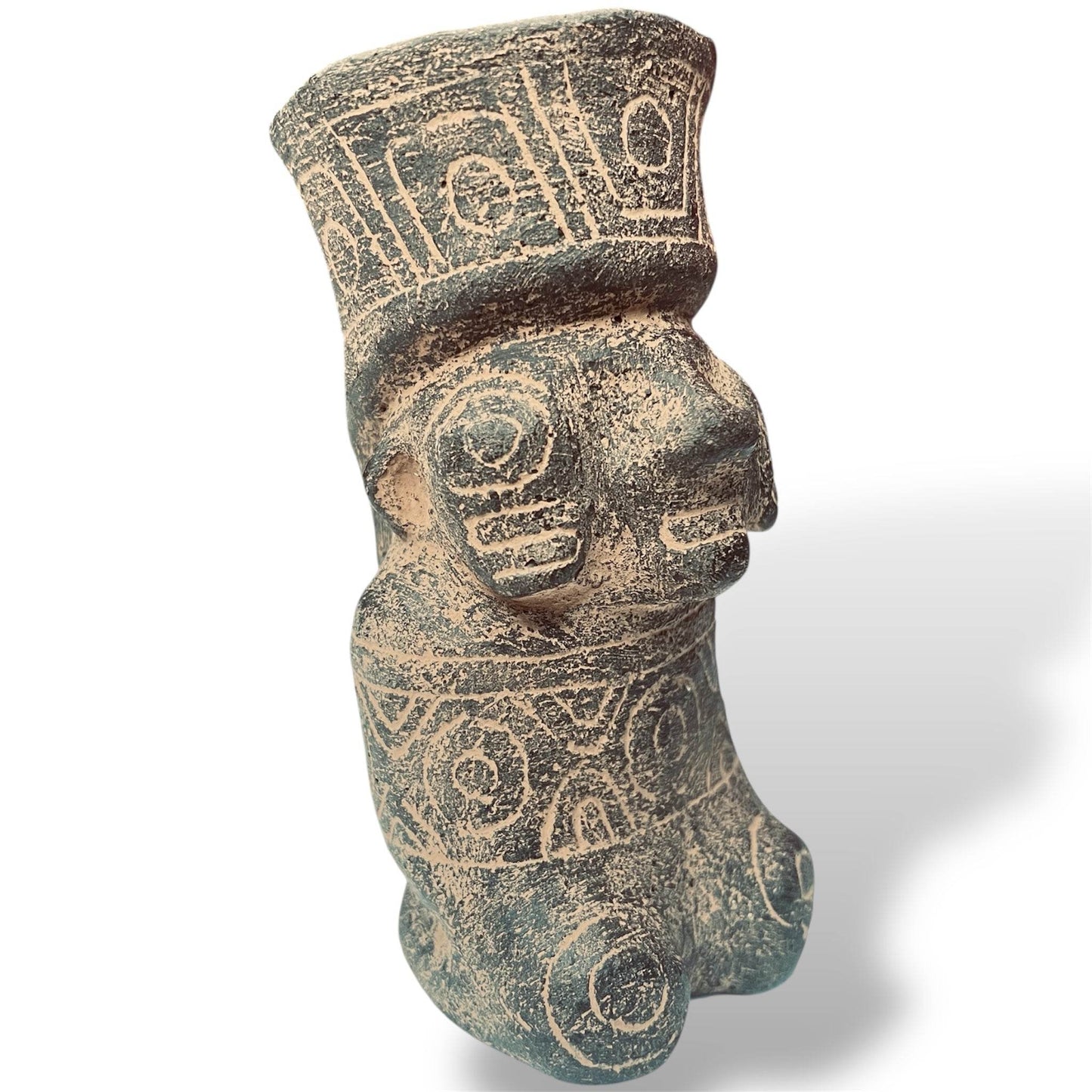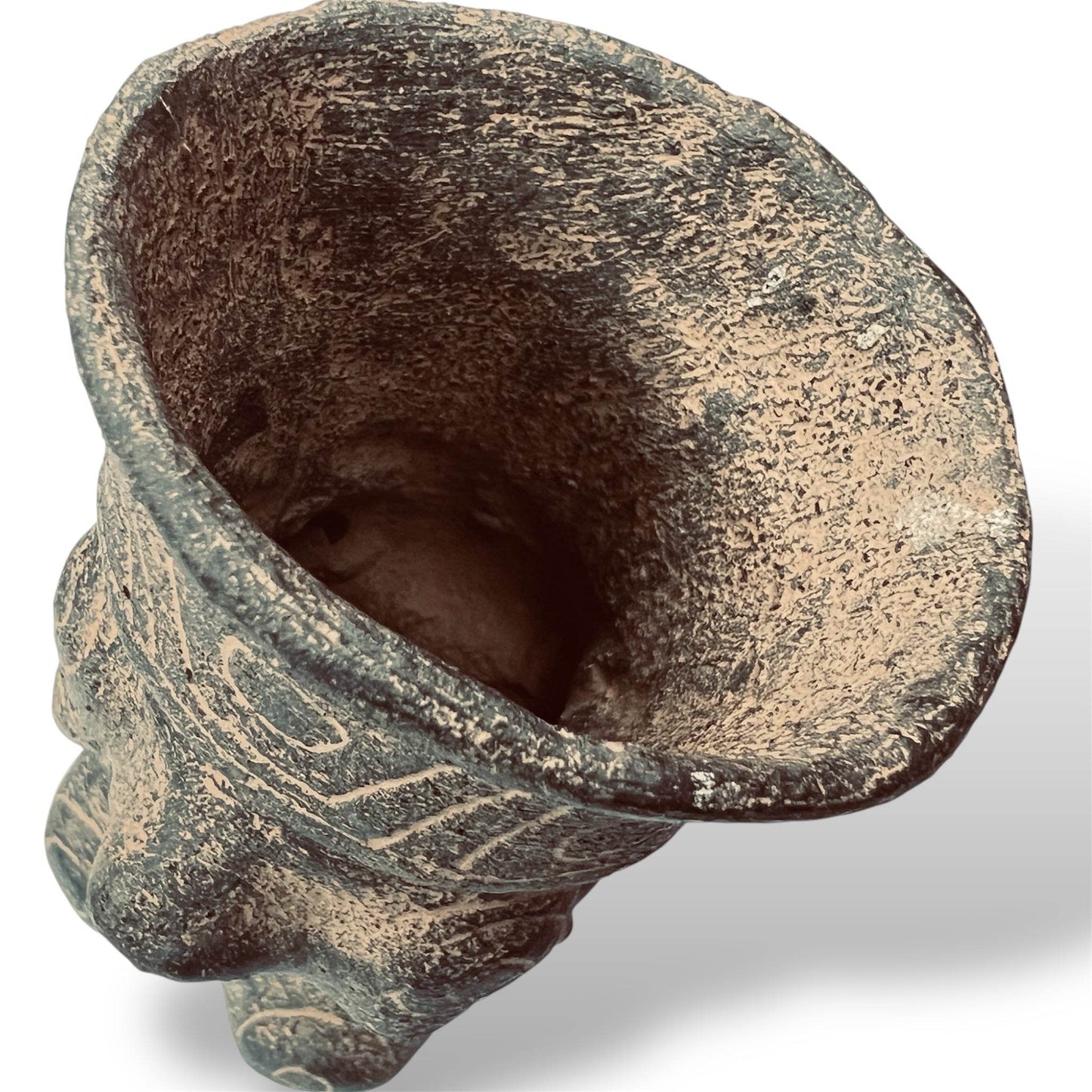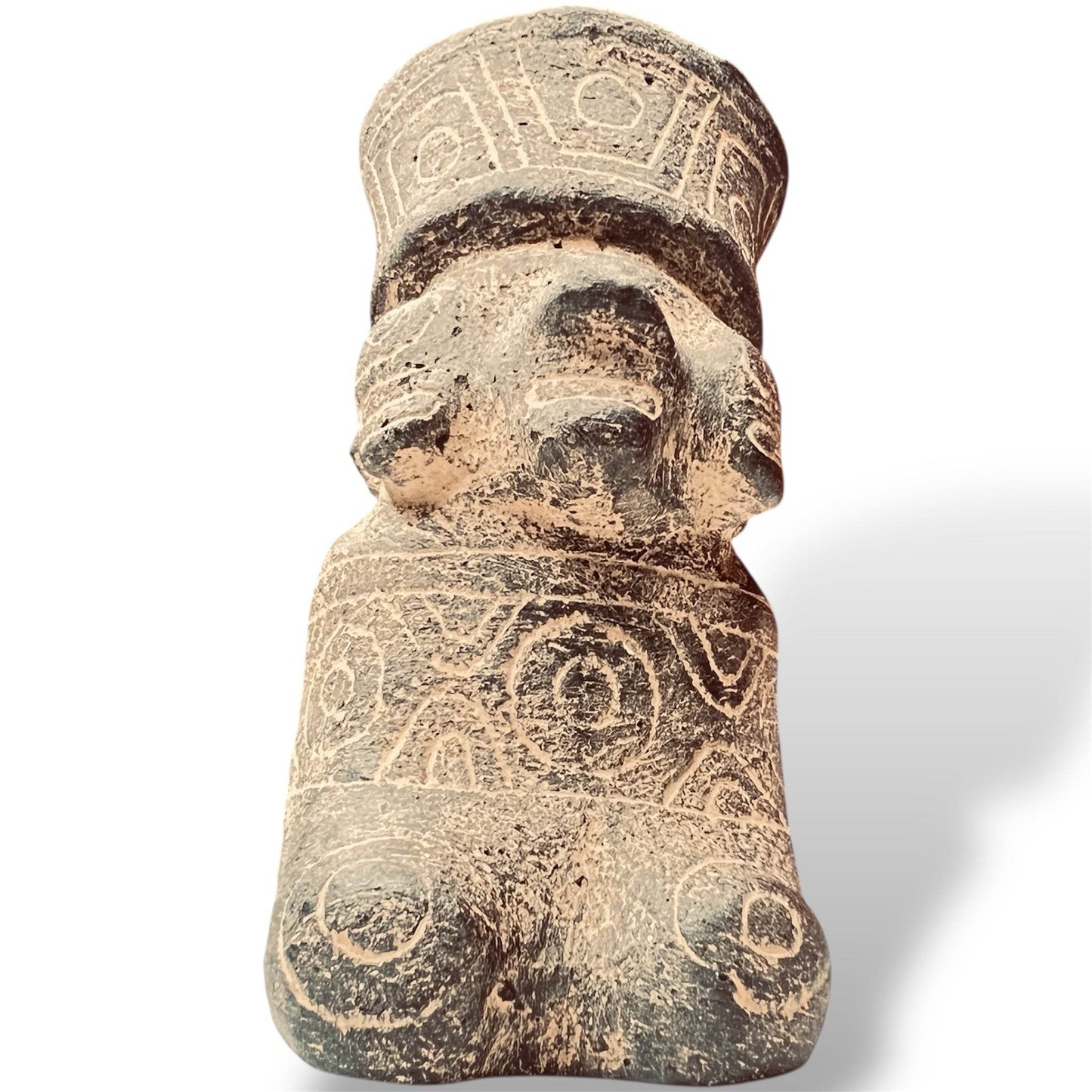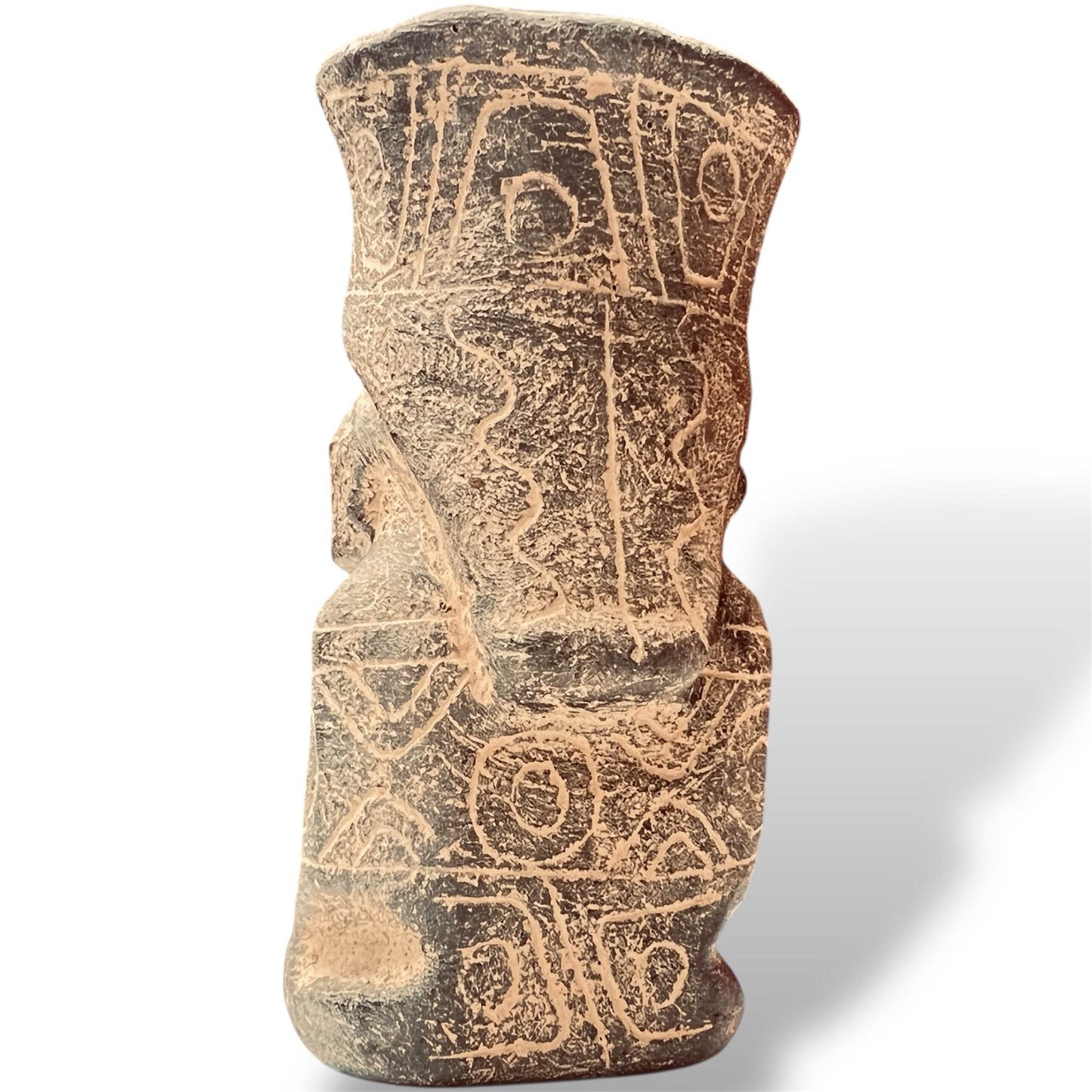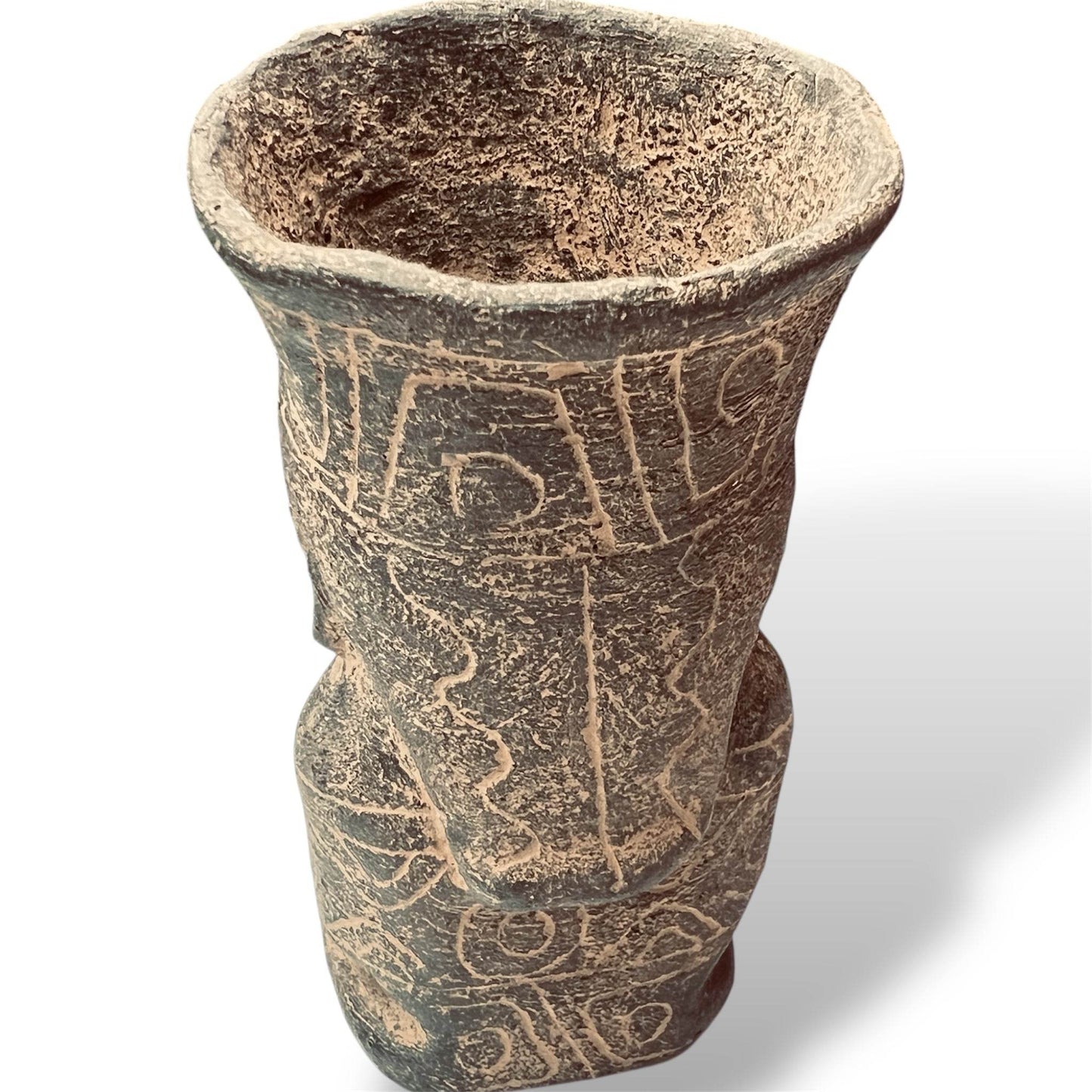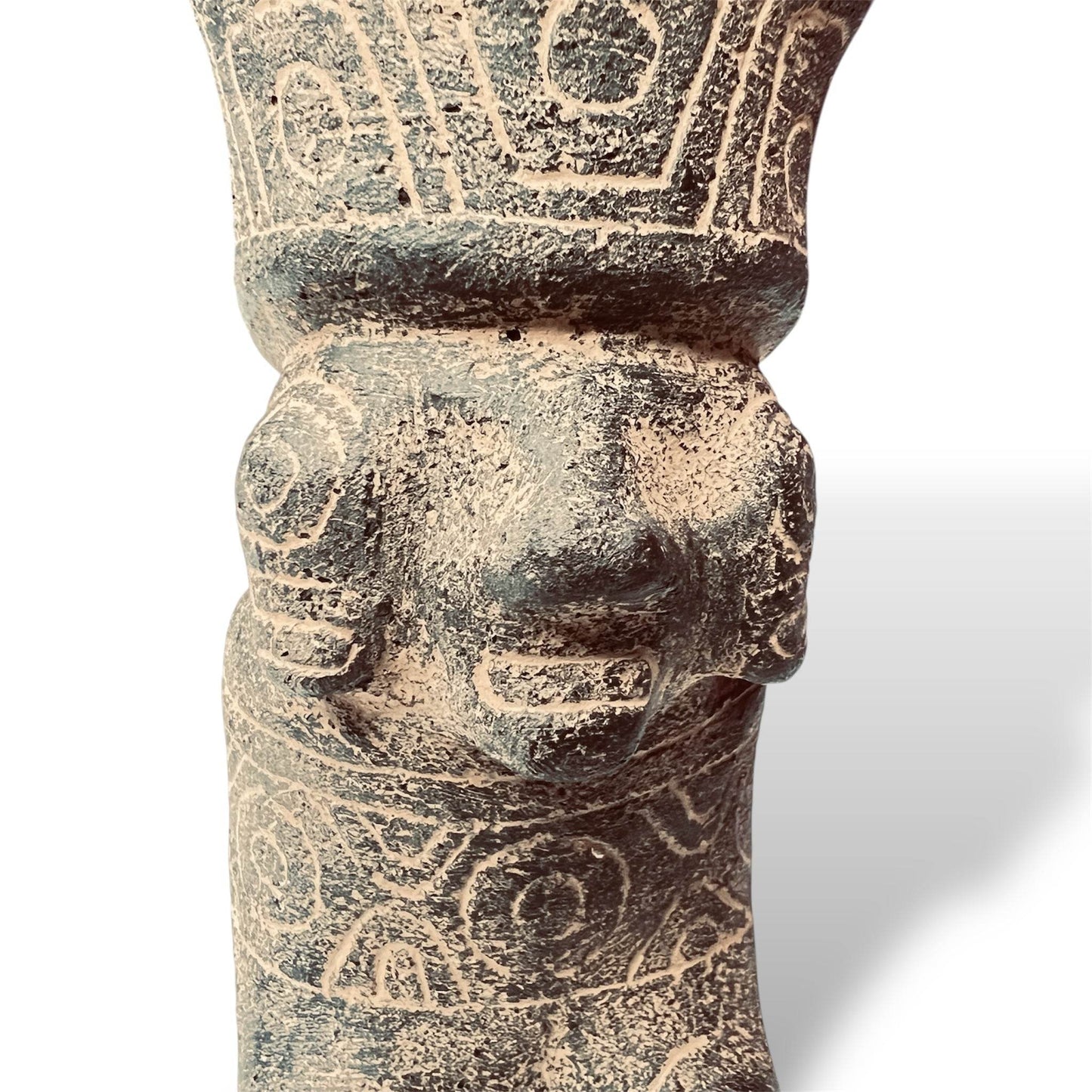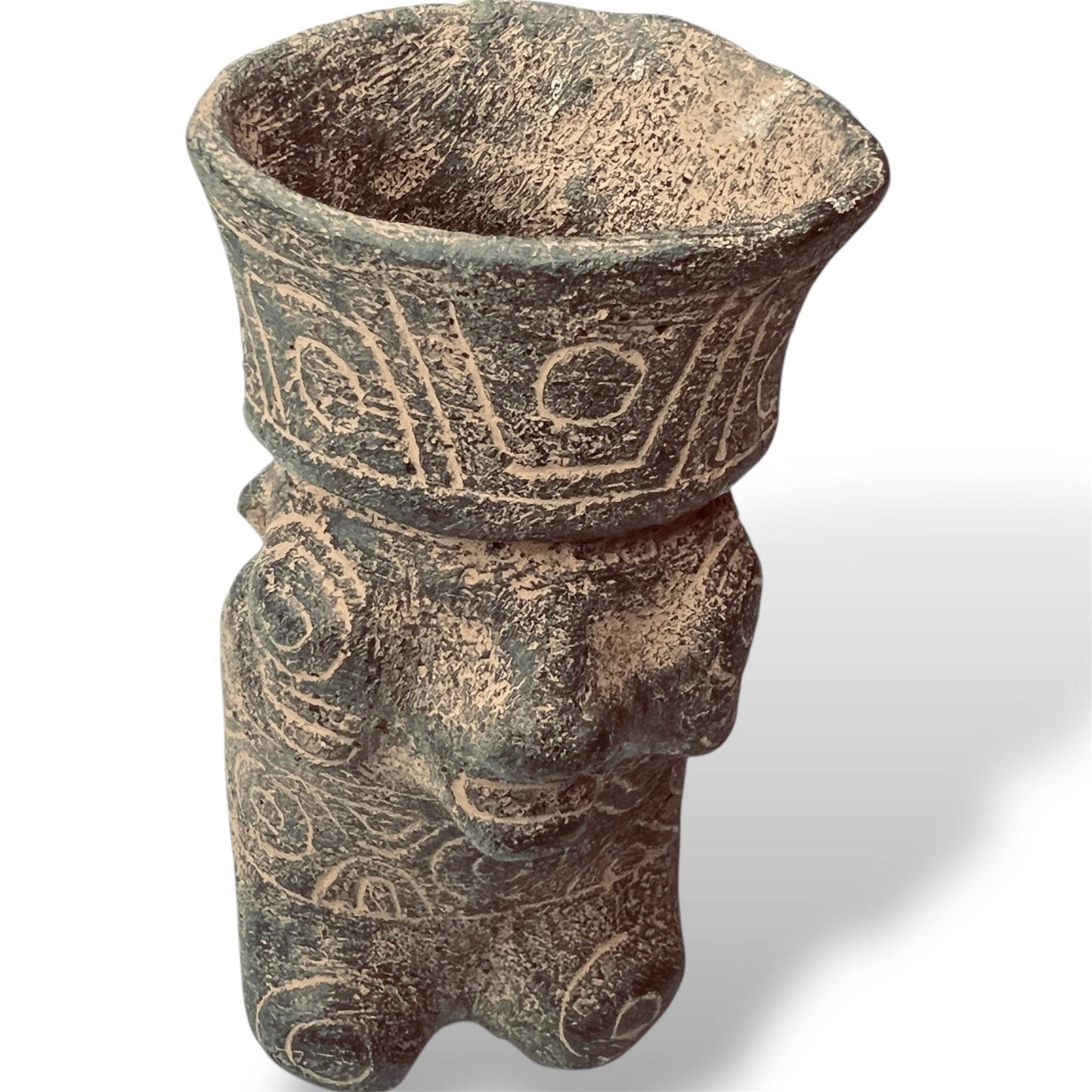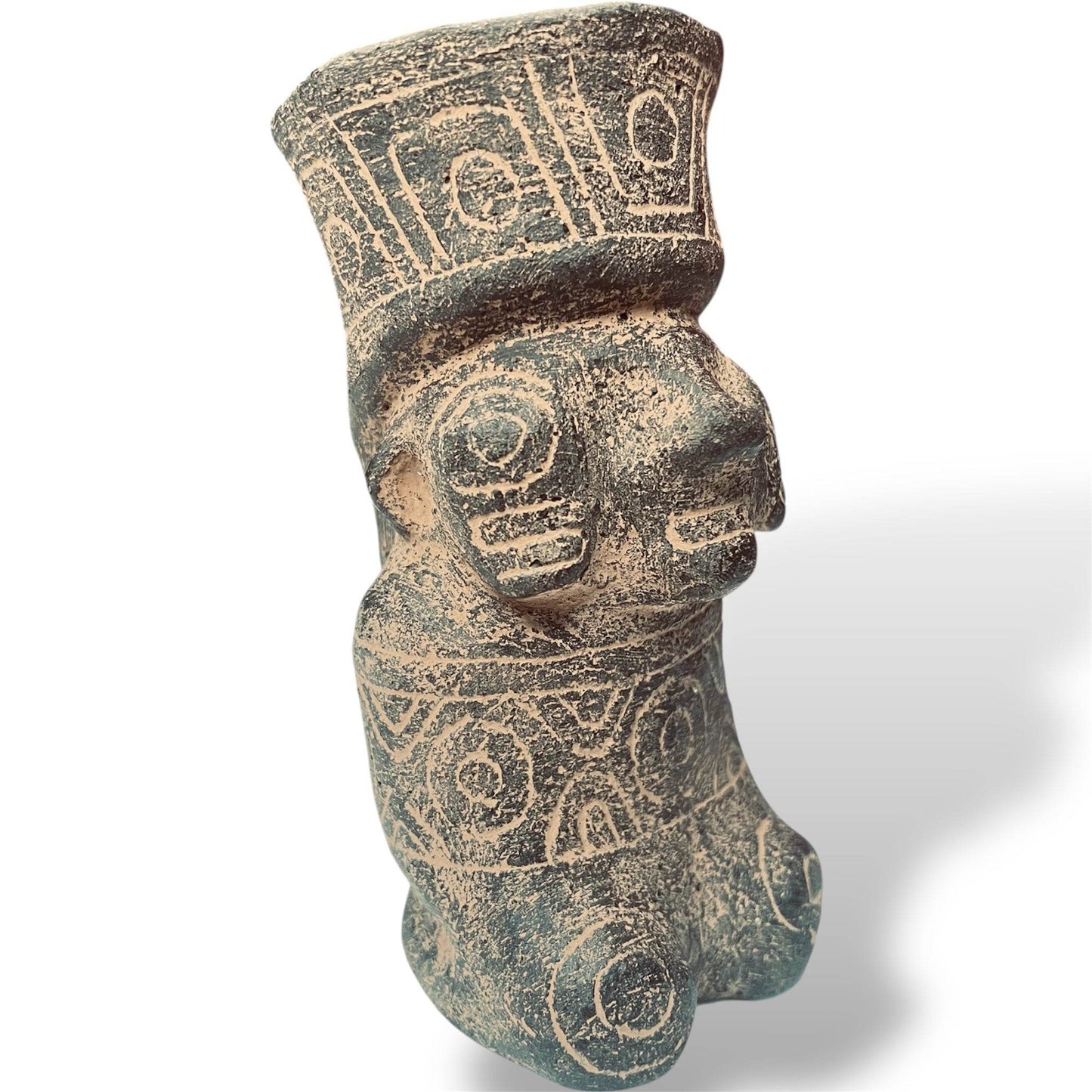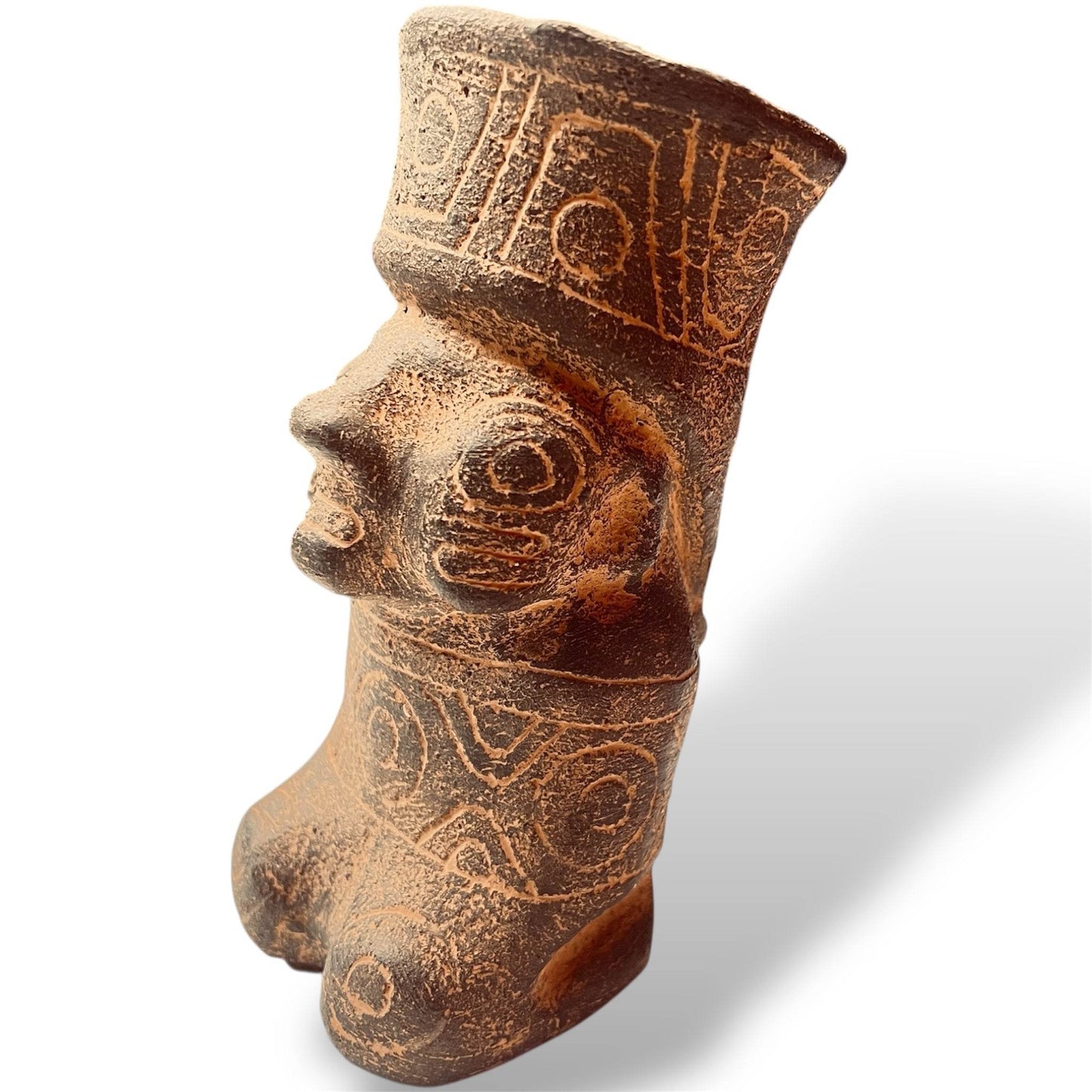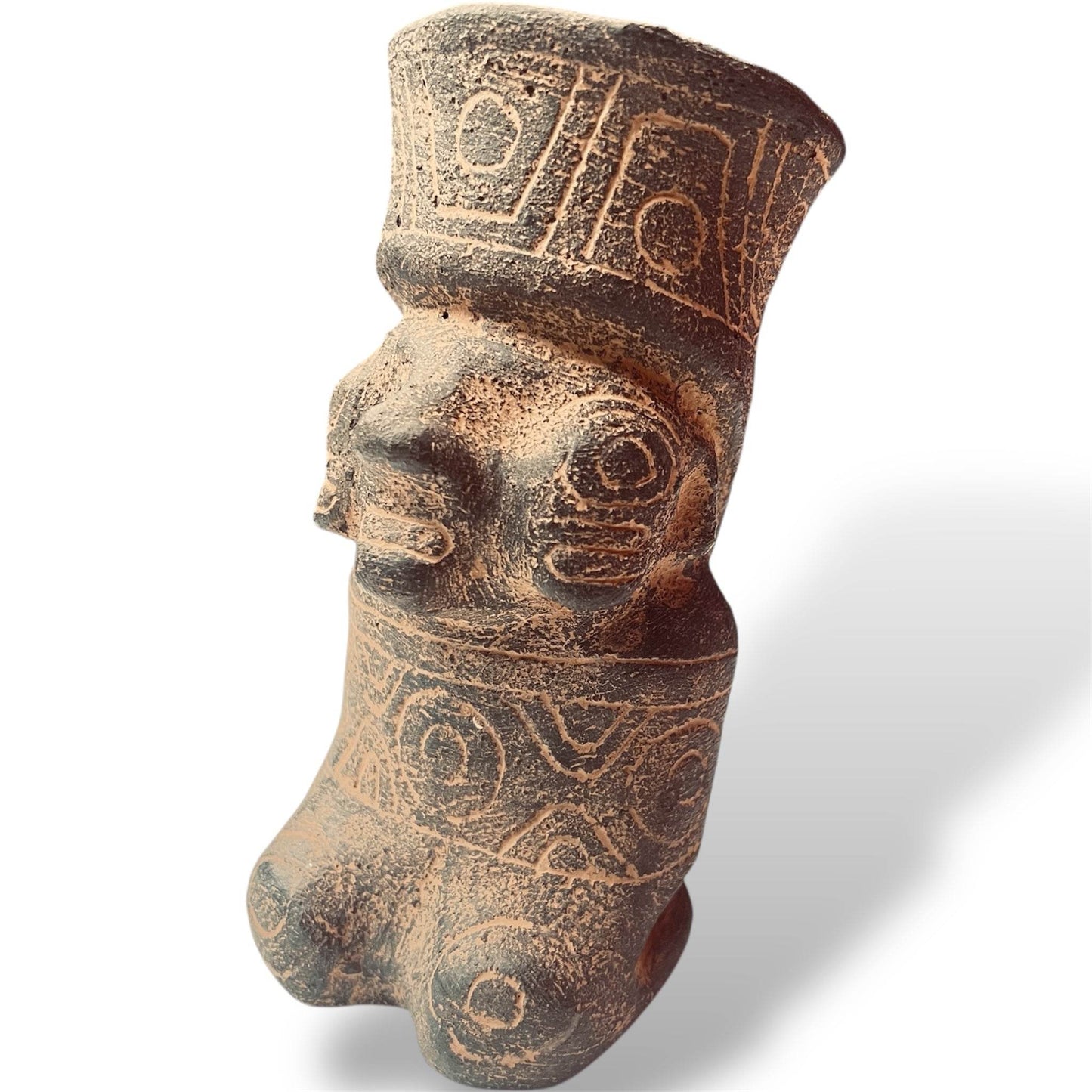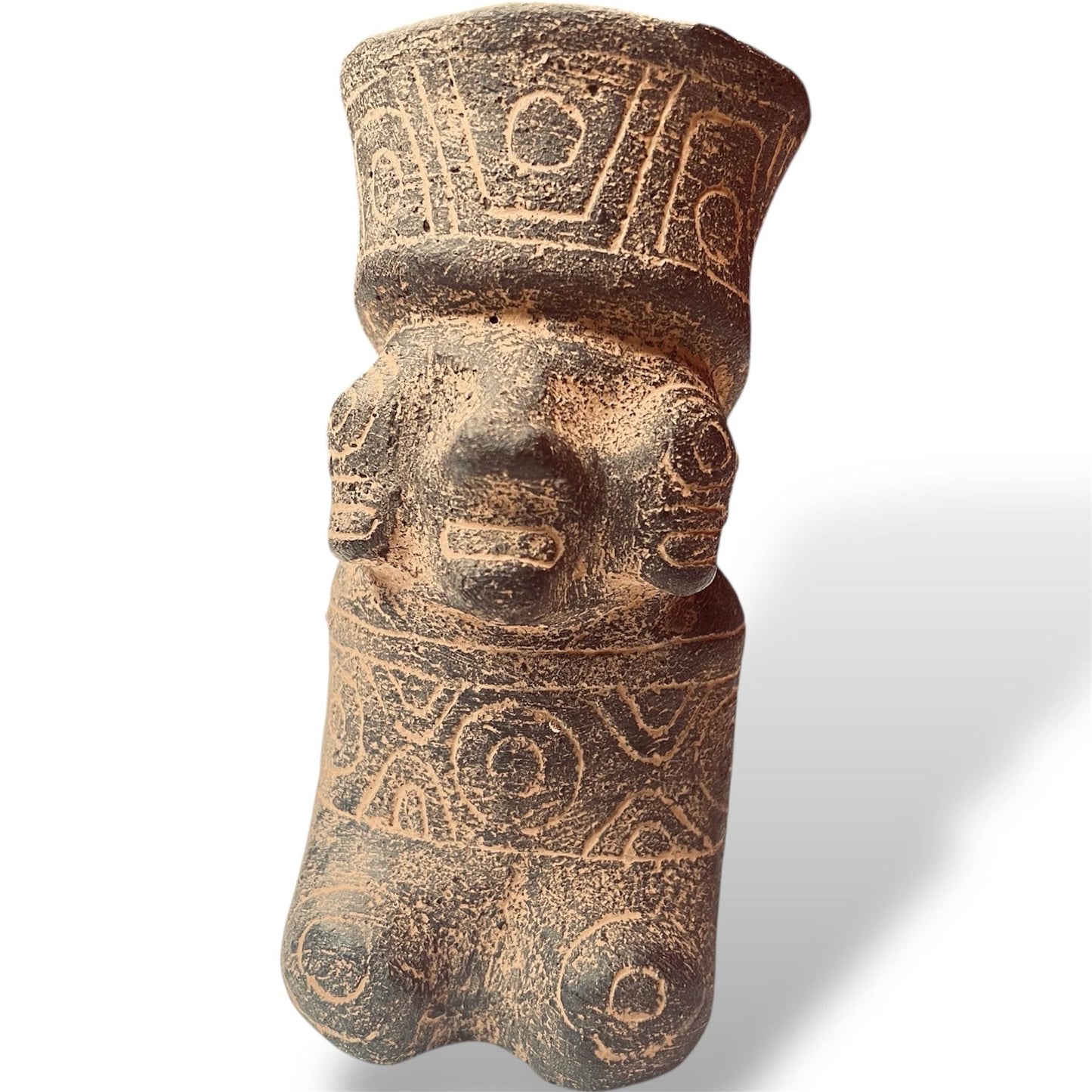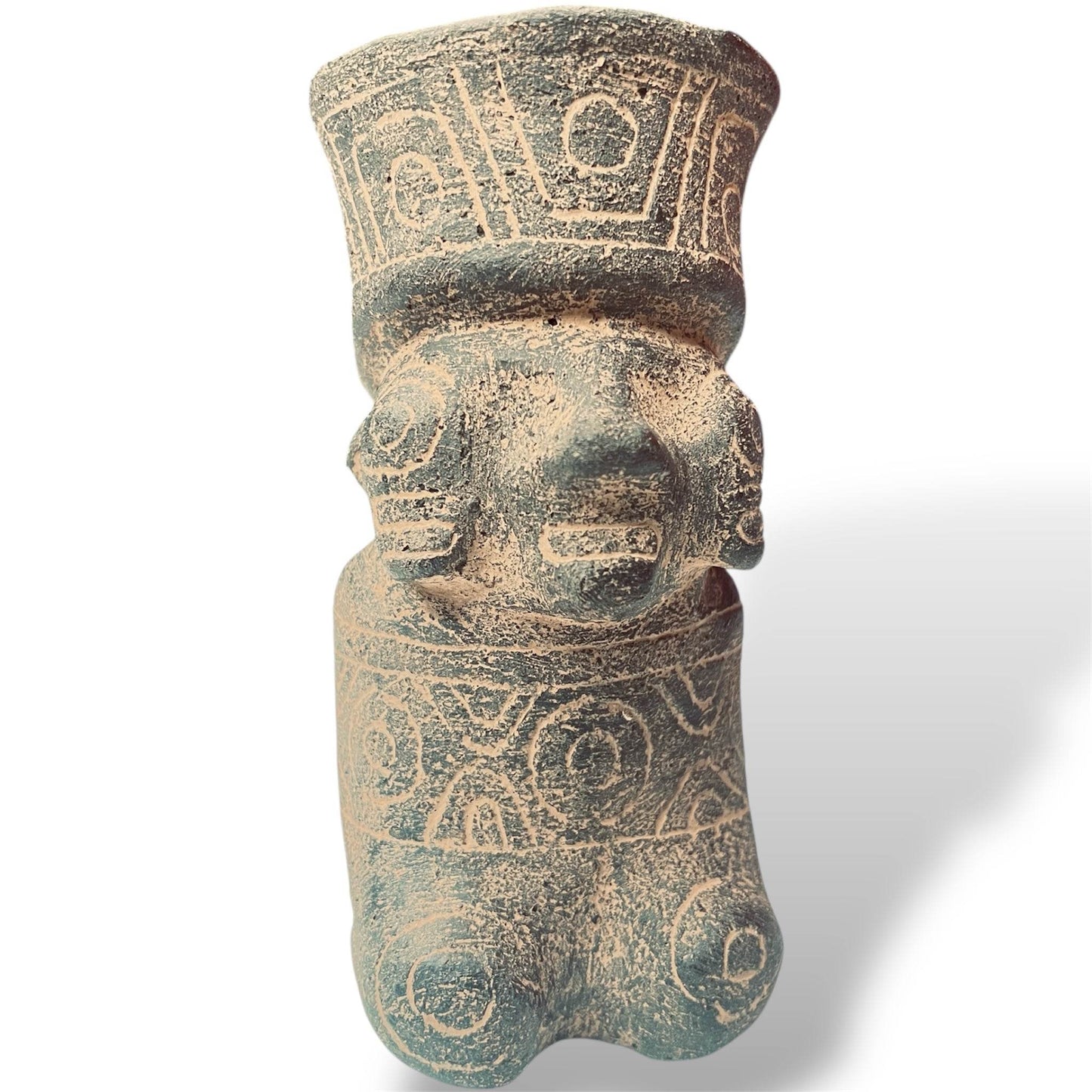Bolivia Ceramic Ritual Effigy Vessel – Kneeling Male Figure, Tiwanaku Tradition
Bolivia Ceramic Ritual Effigy Vessel – Kneeling Male Figure, Tiwanaku Tradition
★★★★★ Rated 5/5 by collectors
Low stock: 1 left
Couldn't load pickup availability
One Day Fulfillment and Fast shipping from New Mexico • Secure checkout.
Share
📜 Customer Commitment – All items are eligible for return or exchange within 14 days under our official policy.
🦙 From The Andes has been curating rare finds since 1987, family-run in Taos, New Mexico.
Specs:
- Artist: Unknown
- Origin: Bolivia (Tiwanaku cultural region)
- Material: Hand-formed ceramic
- Provenance: Private family collection, held since the 1970s
- Dimensions: 5.5 in. × 2.5 in. × 5.25 in. approximately
- Weight: 1 lb.
Catalogue Note:
This ceramic ritual vessel originates from the Bolivian highlands and reflects the iconographic tradition of the Tiwanaku civilization. Depicting a kneeling male figure with incised geometric patterns—concentric circles and linear banding—it evokes Andean themes of cosmology, offering, and ancestral reverence.
Its wide-mouthed cavity suggests ceremonial use, likely involving chicha, the fermented maize drink used in community rituals. The surface patina and tooling details are consistent with traditional pre-industrial craftsmanship. The vessel has remained in a private Bolivian family collection since the 1970s and is not a modern reproduction.
Highlights:
- Hand-formed ceramic ritual vessel from Bolivia
- Iconography aligned with Tiwanaku visual tradition
- Depicts kneeling male figure with engraved ceremonial motifs
- Functional chicha offering form
- Held in private family collection since the 1970s
- Not a reproduction
- Attributed to the Tiwanaku cultural tradition (c. 800–1200 AD)
- Functional ceremonial cavity for libation or offering
- Collector-grade object with historical and archaeological significance
Provenance Disclosure:
This piece has remained in our family collection since the 1970s. While its precise age is not formally verified, it is not a modern reproduction and was created using traditional materials and methods consistent with historic Andean ritual ceramics.
Artifact FAQ – Bolivia Ceramic Ritual Vessel
What is this object?
This is a hand-formed ceramic ritual vessel depicting a kneeling male figure.
Where is it from?
The vessel originates from the highlands of Bolivia, in the cultural region historically associated with the Tiwanaku civilization.
How old is it?
Its exact age is unknown, but it has been in a private Bolivian family collection since the 1970s.
What is it made of?
It is made of unglazed, traditionally fired ceramic, shaped and incised using pre-industrial methods.
What was its purpose?
The vessel was likely used in ritual settings, specifically for drinking or offering chicha — a fermented maize beverage central to Andean ceremonial life.
Is this piece authentic?
This is not a reproduction. It shows surface wear, patina, and tooling consistent with handmade, culturally rooted ceremonial use.
Is it Incan?
No — while the Inca later ruled the region, this piece reflects the earlier Tiwanaku visual tradition, known for stylized human forms and geometric ceremonial motifs.
Is this a one-of-a-kind piece?
Yes. This vessel is singular and has never been replicated. It is being sold as an individual, culturally significant artifact.
Final Sale Terms
Final Sale – No Returns or Exchanges.
Due to the culturally sensitive and singular nature of this artifact, all sales are final. Please review all photos, dimensions, and provenance details prior to purchase. We welcome any questions before checkout.
Further Reading: Learn about the Tiwanaku civilization, their ritual practices, and the legacy of ceremonial vessels in our full article here.
Artifact Care Guide – Bolivia Ceramic Ritual Vessel
Handling:
- Handle with clean, dry hands or cotton gloves to avoid transferring oils or moisture.
- Always support the base when moving; do not lift by the rim or cavity.
Display:
- Display on a padded or non-slip surface to prevent sliding or tipping.
- Avoid placing in direct sunlight or near heat sources, as this can cause stress or fading over time.
- Use a stable stand or museum-quality mount if elevated.
Cleaning:
- Do not use water, soap, or commercial cleaners.
- Dust gently with a soft, dry brush or microfiber cloth.
- Never polish or apply waxes, oils, or conditioners — these can compromise the surface.
Storage:
- Store in a dry, climate-stable environment.
- Wrap in acid-free tissue or soft cloth if stored in a box.
- Avoid stacking with other objects to prevent abrasion.
Respecting Cultural Integrity:
- This is a ritual object with ceremonial context.
- Do not repurpose, alter, or use it as functional décor (e.g., vase, incense burner, etc.).
- Treat it as a collector-grade artifact, not as decorative pottery.
